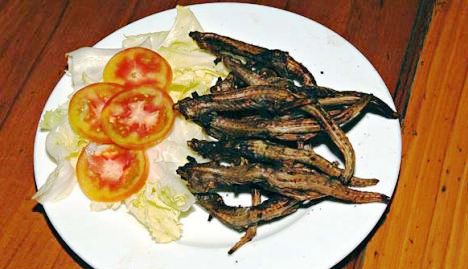A news item caught my eye recently that blended two of my favorite subjects – cuisine and biology. Long story short is that a species of asexual lizard previously undocumented by scientists has been discovered in Southern Vietnam recently. Neat thing about the story is that the lizard was discovered in a restaurant – grilled and plated and ready to be consumed.
A Vietnamese scientist stopped for a bite at a local eatery-pub in Southern Vietnam and noticed that the lizards on the plate were all female, which he thought a bit unusual. Not looking like other regional asexual species, he realized that he had potentially identified a species “new” to science and contacted colleagues at La Sierra University in the United States to help him confirm the find.
Well, sure enough. The Americans sweep in to check out the new lizards and lo and behold the restaurant has grilled up the last of the crop and there are no potential type specimens to inspect. Being resourceful, the scientists pay a bunch of kids to go catch some more of the ones usually served up at the restaurant. They hit paydirt when the kids came back with bunches of the critters – all female, all reproducing asexually, all identical genetically (with minor, standard variations due to replication error). A new species and an interesting one to boot.

All manner of lizards, insects and small mammals are on the menu in Southeastern and Eastern Asia, so it is no surprise that people are eating them. In fact, these new lizards (Leiolepis ngovantrii) are usually marinated and grilled with lemongrass after being prepped by boiling and soaking in banana leaves and are apparently quite tasty. The Thais forego the lemongrass and serve lizard on a heaping bed of their delicious basil.
Interesting thing is that the locals knew all about this “unknown” species and had been enjoying it for years. So, in addition to remote jungles and mountaintops, scientists should add “local pub” to the places where they can make great new discoveries. From experience, scientists have over the centuries made many great discoveries in pubs – but none before like this. (Words by Laura Kelley; Photos by Scientific Staff of La Sierra University. Read more about the discovery in Zootaxa 2433:47-61 (2010)).

